A TRIP TO THE MOON (1902)
A group of astronomers go on an expedition to the Moon.
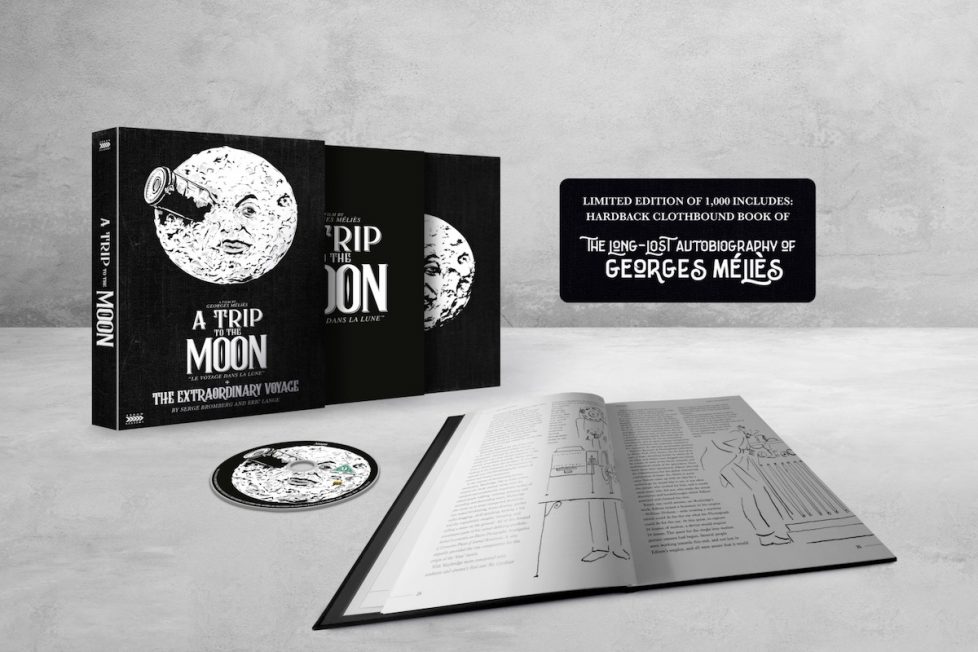
A group of astronomers go on an expedition to the Moon.


Those few remnants that survived the dawn of cinema give the impression of relics from a long-lost culture. Not only because they depict a world so different from ours, but because of their approach to cinema. Even silent pictures of the 1920s feel positively modern in comparison with these short films (sometimes extremely short), where one can sense the absolute novelty of the medium and how experimental each step forward must have seemed. They are naive on one level, of course, with little idea of how the camera can be used to enhance the drama rather than simply recording it. But there’s also a particular kind of poetry to them; a mixture of glee and awe at film’s possibilities.
This is often on display in the work of Georges Méliès (1861-1938), the French filmmaker (“director” is understating it, as he did a bit of everything) who Charlie Chaplin called “the alchemist of light.” And the excitement of the new is most obvious in Méliès’s pioneering effects, drawing on pre-cinema traditions of magic and illusions, particularly 1902’s A Trip to the Moon (Le Voyage dans la Lune).
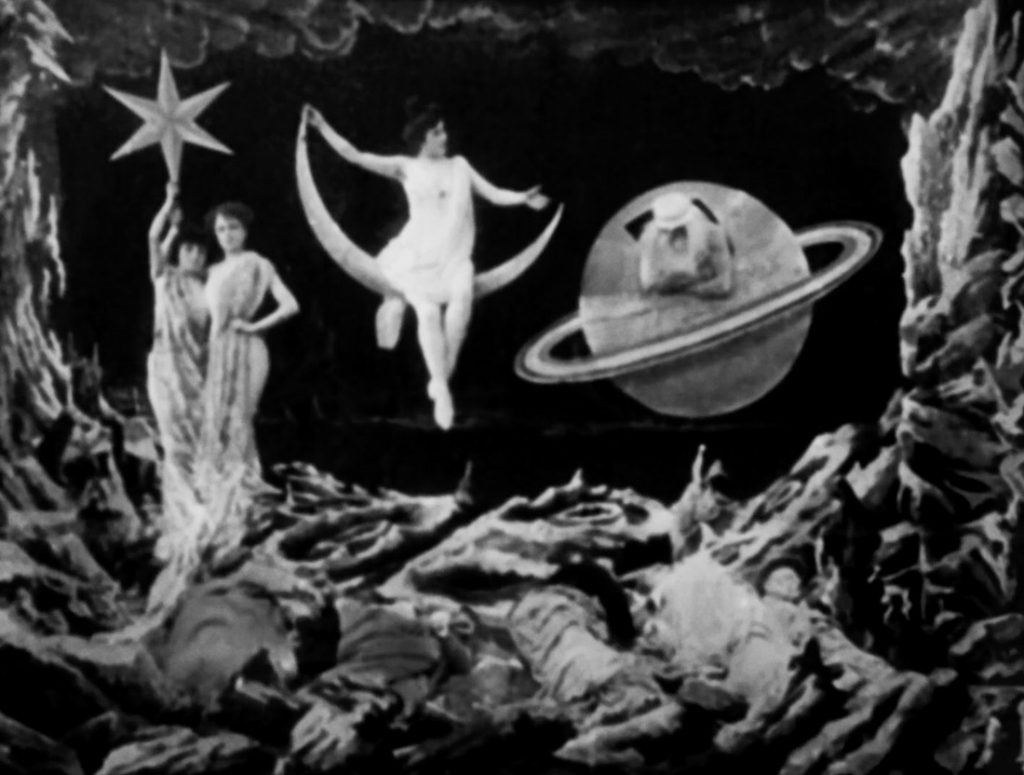
Presented here by Arrow Academy in a sumptuous package that includes two versions of the film, five different scores, and a trio of useful documentaries, A Trip to the Moon was a lavish production for its day, with 30 scenes and a three-month production schedule. The Greek director Costa-Gavras, interviewed on the Blu-ray, likens it to James Cameron’s Avatar (2009). It was a huge hit internationally, too, and one of the most interesting aspects of the Arrow documentaries is the attention given to piracy of the film and Méliès’s attempts to prevent it.
Inspired by the work of H.G Wells and Jules Verne, A Trip to the Moon tells the story of a group of scientists (led by Professor Barbenfouillis, played by Méliès himself) who take a rocket to the moon still wearing their coats and hats. And, once there, they fight off spear-wielding aliens (looking a little like the Creature from the Black Lagoon) with umbrellas. It’s sweetly silly. One the one hand it reflects the era’s enthusiastic anticipation of future technology, but on the other, it makes no attempt to be realistic even by the standards of 1902. There is plenty of humour, too, not least in the goings-on at the Institute of Incoherent Astronomy and, of course, in the famous image of the irritated Man in the Moon with a rocket stuck in his eye. It’s worth listening to one of the narrated versions on the disc at least once so one can pick up on subtler narrative details that might otherwise pass by.
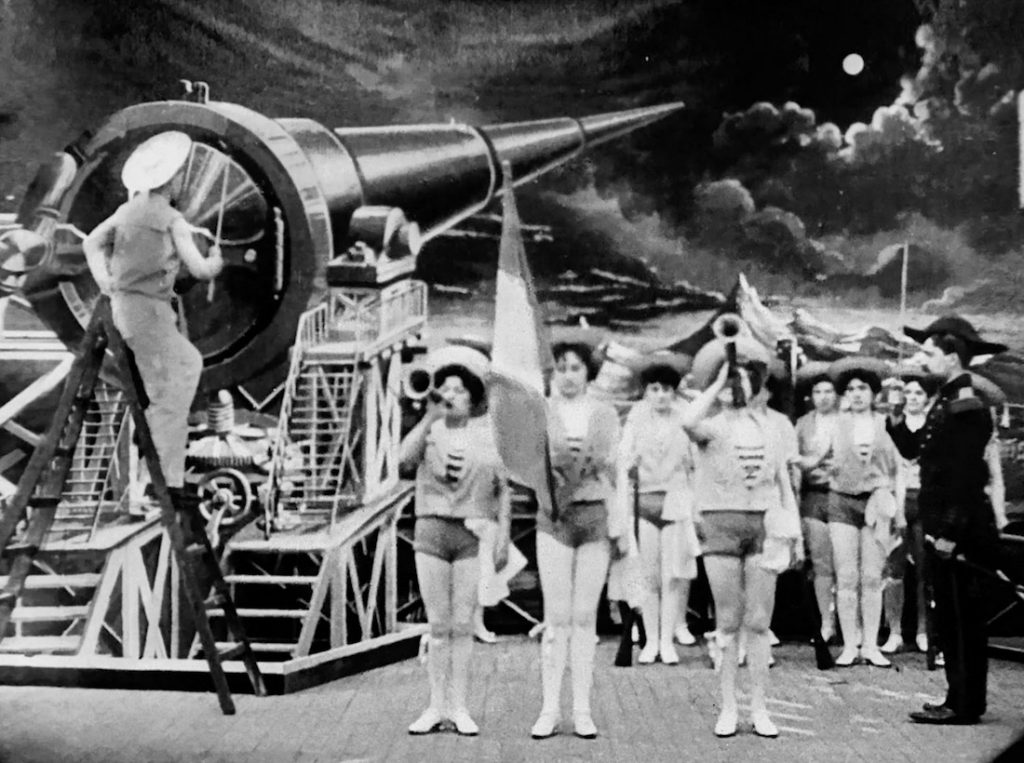
The film also reflects the combination of reliance on theatrical tradition and innovative departure from that tradition that characterises much early film. Large parts of it are completely set-bound with an immobile camera – we might as well be watching actors on a stage, and the backgrounds are painted flats – but the rocket-in-the-eye is essentially a reaction shot, and the rocket’s final descent to Earth is an action sequence of a kind that could not easily be performed on-stage. And, of course, Méliès is keen to use as many of his newfangled effects as possible, including dissolves and multiple exposures.
Elsewhere on the Arrow disc (where the two main documentaries are Jon Spira’s The Innovations of Georges Méliès and The Extraordinary Voyage from Serge Bromberg and Eric Lange), we can see how generously he employed effects in other movies as well, and how quick he was to take them up. For example, his Card Party (1896) is a typical film of the period in how it simply depicted normal everyday activity, but the same year he was also using the substitution splice in The Vanishing Lady to portray a magician’s trick. (This effect had been discovered accidentally by Méliès when his camera jammed; effectively an early form of editing, at a time when many films were unedited in the modern sense, it involves joining together two shots where most elements are identical but one or more have changed. The result is the impression that one thing has suddenly transformed into another. Méliès used it especially well to change a pumpkin into a carriage in 1899’s Cinderella.)
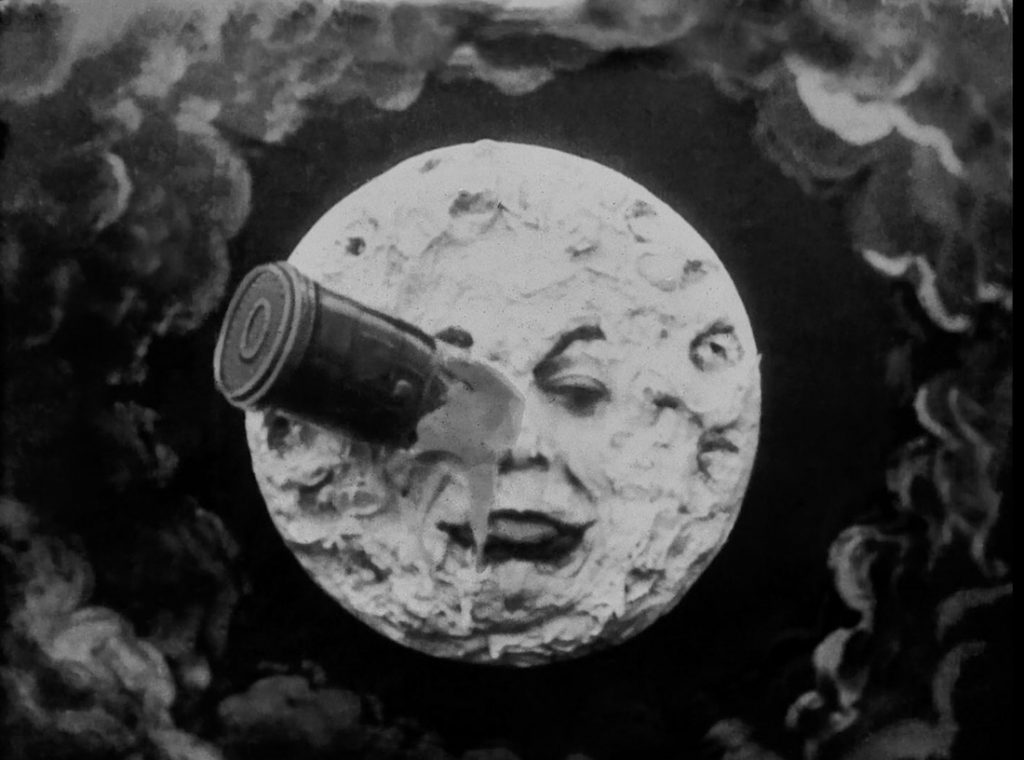
Even more elaborate effects can be seen in An Impossible Balancing Feat (1902) and The Man With the Rubber Head (1901), and most impressively in The One-Man Band (1900), where a single actor plays seven musicians simultaneously.
As visually important as these effects, though, is the colourisation of the film. This Arrow release provides both the black-and-white version (which for many years was believed the only one extant) and the colour version restored following the discovery of a miraculously undecayed print at the Filmoteca de Catalunya in Barcelona (site of one of my favourite cinemas, incidentally). The restoration conducted by Technicolor and completed in 2011, covered in fascinating detail by The Extraordinary Voyage, involved digitising more than 13,000 frames and then, where a frame or part of it was too badly damaged to be usable, filling in the gaps from monochrome frames before colouring that footage too. The result is a version of A Trip to the Moon that has few serious flaws and in some places is of startlingly good quality.
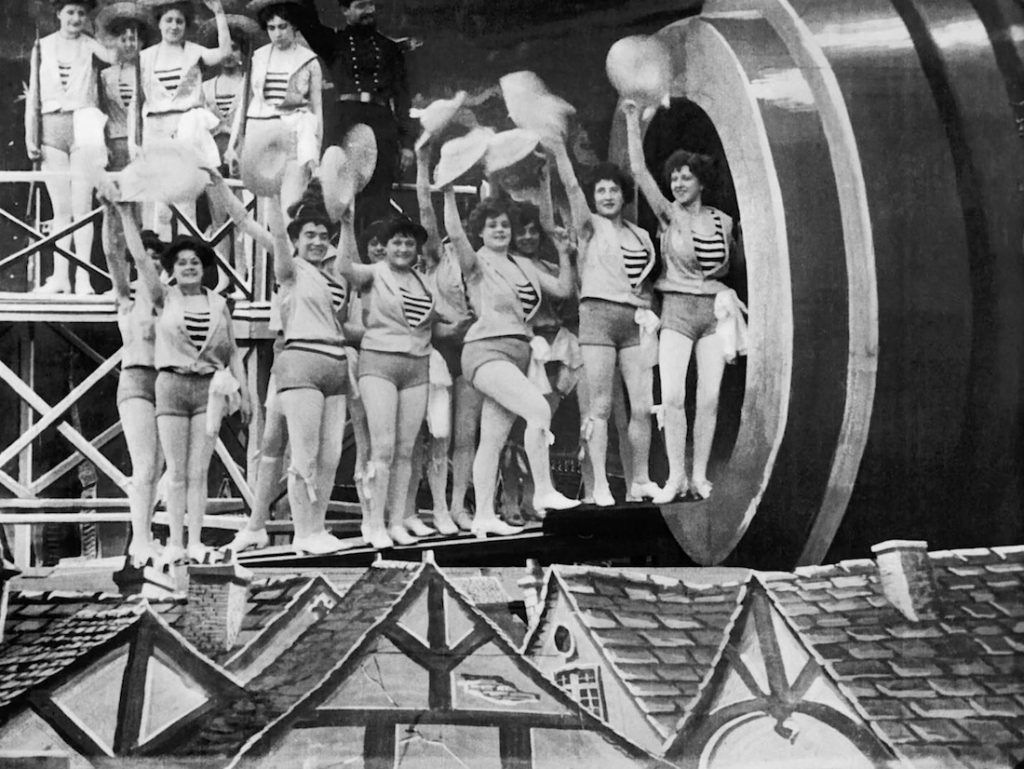
Not everything on-screen is strongly coloured (the essential principle is a sepia background with other colours for key foreground elements), but even so it’s a vivid reminder that in the earliest days, what we think of as “black-and-white movies” very often weren’t. If there’s one downside it’s that the coloured dissolves can be visually confusing, but it’s a small price to pay.
Arrow provides different scores for the colour and black-and-white versions. Perhaps the more interesting are those for the colourised film; Jeff Mills’s is minimalist and weird (the continual tick-tick-tick rhythms perhaps alluding to film moving through a projector?) while the alternative from the group Dorian Pimpernel is more tonal and more varied, with substantial changes of mood between scenes. For those preferring a more conventional approach, the third choice is an improvised piano accompaniment in period style by Serge Bromberg, who also co-created the Extraordinary Voyage documentary. (Méliès himself played the piano for the premiere of A Trip to the Moon.) For the black-and-white version, meanwhile, the two options are a piano accompaniment by Frederick Hodges in a similar vein to Bromberg’s, or a playful score for small instrumental ensemble composed by Robert Israel, broadly speaking in the idiom of the film’s period but not just pastiche.
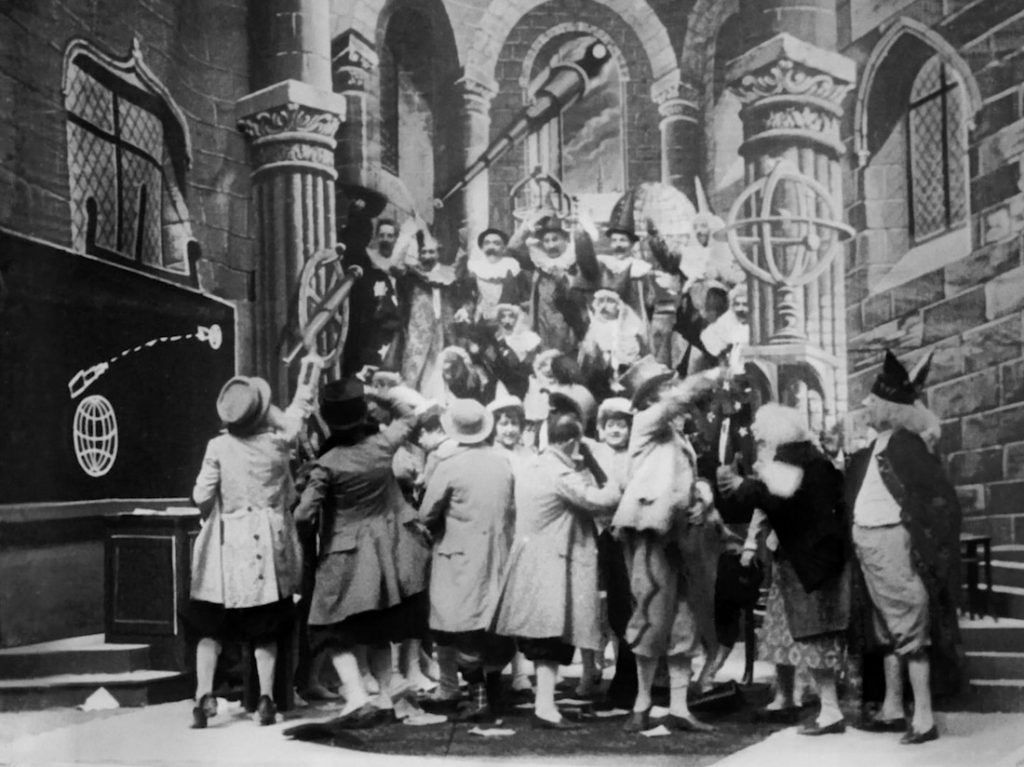
Less essential than the two principal documentaries, but still informative, is the 1952 documentary/docu-drama Le Grand Méliès, directed by Georges Franju and featuring both Méliès’s wife and his son—as well as a reference to one “W.D. Griffith”—which perhaps shows how unfamiliar even the giants of early film were at the time it was made. And rounding the package off is what Arrow describes as “a beautiful hardback edition of Méliès’ unpublished autobiography”, which I didn’t receive for review.
All these things are nice to have. But the star of the disc is the colourised Trip to the Moon itself, a film so technically crude by today’s standards, childish in its narrative, entirely lacking in characterisation… and yet consistently compelling, like a glimpse not only into the imagination of Georges Méliès but also into the spirit of early cinema, when already it was becoming clear that anything was possible.
1902 | FRANCE | 16 MINUTES | 1.33:1 | BLACK & WHITE/COLOURISED | SILENT

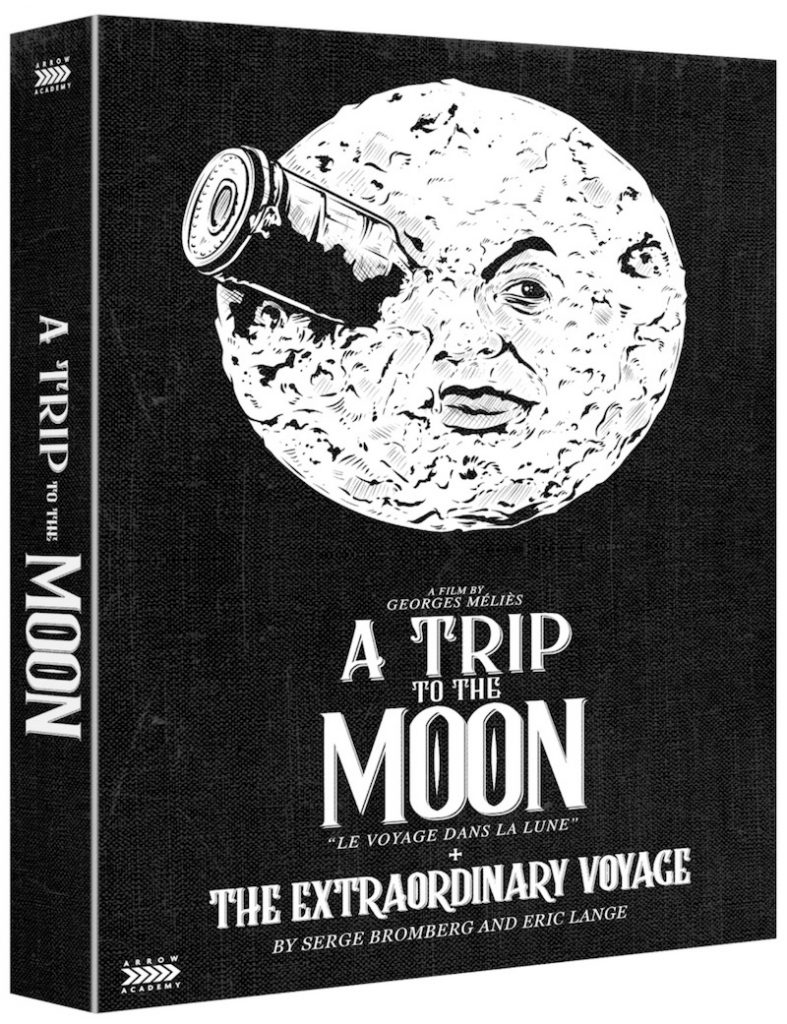
‘The Long-Lost Autobiography of Georges Méliès: Father of Sci-Fi and Fantasy Cinema’ Available for the first time since 1961, finally translated into English by Ian Nixon, with annotations and supporting material by Jon Spira, Méliès filmography, illustrations by Lucy Collin, interviews with filmmaker Serge Bromberg, silent film expert Bryony Dixon, and filmmaker Michel Gondry.

director: Georges Méliès.
writer: Georges Méliès (based on ‘From the Earth to the Moon’ and ‘Around the Moon’ by Jules Verne).
starring: Georges Méliès, Bleuette Bernon, François Lallement & Henri Delannoy.
